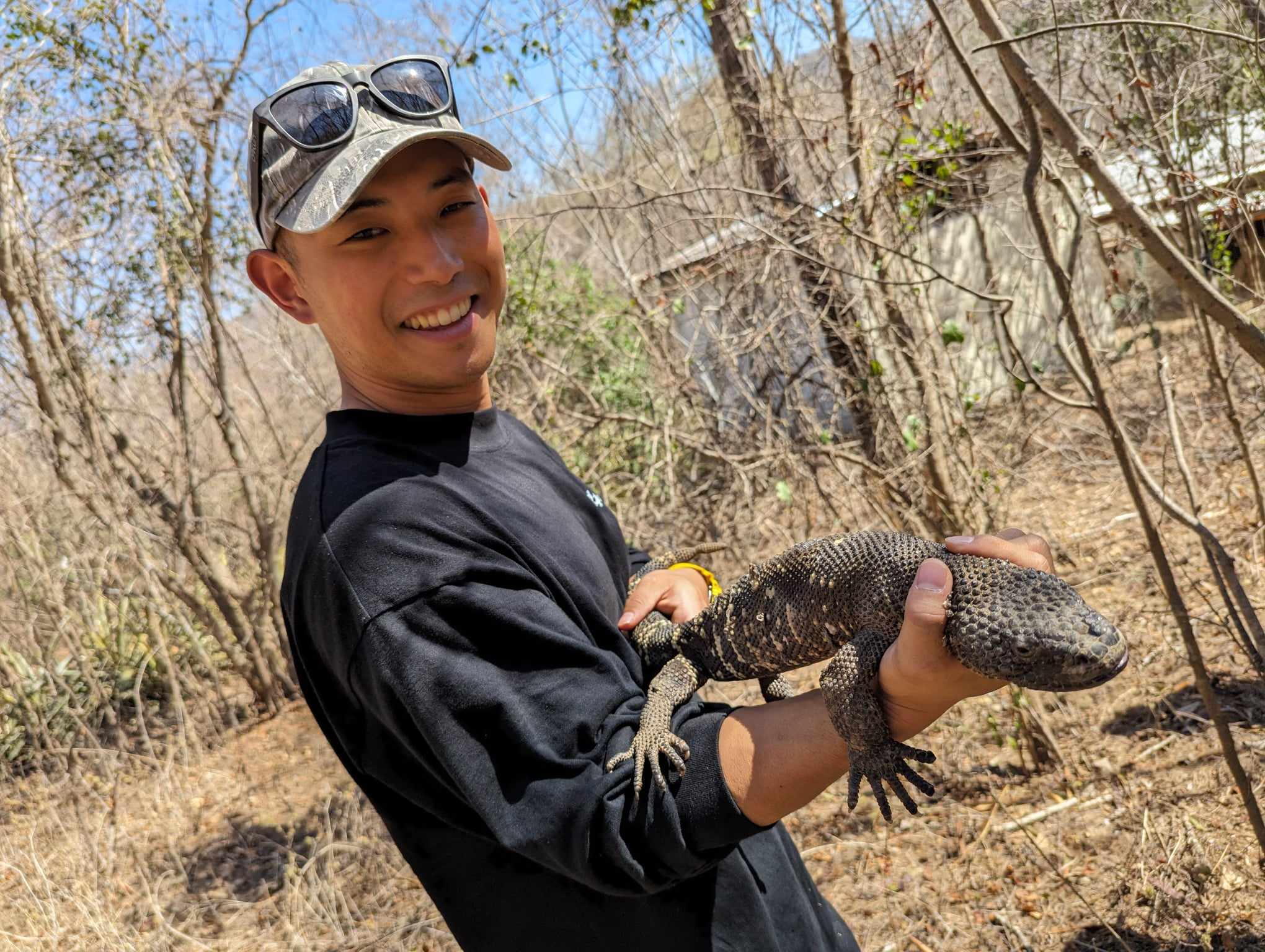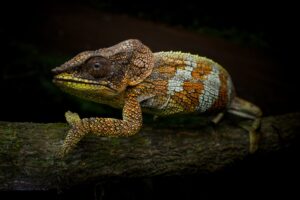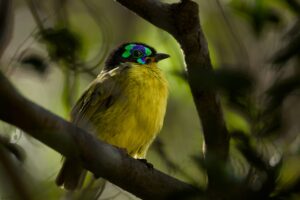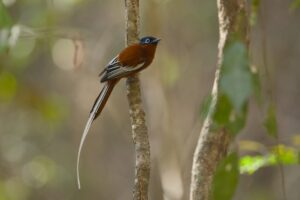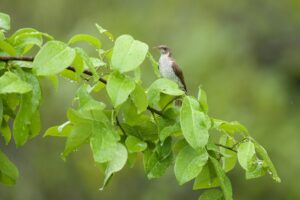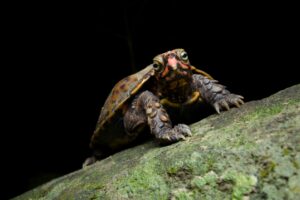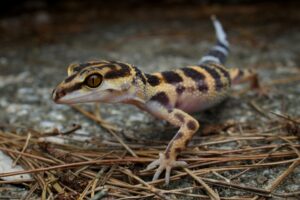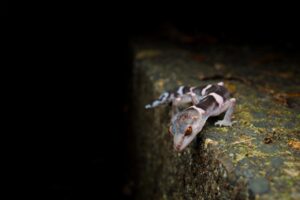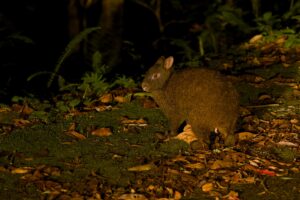Manakins are fascinating birds with a compact, stout body and a seemingly short neck, giving them an adorable appearance. Once you encounter these birds in the wild, it’s impossible not to be captivated! In this blog, we introduce some of the incredible manakin species observed in Panama.
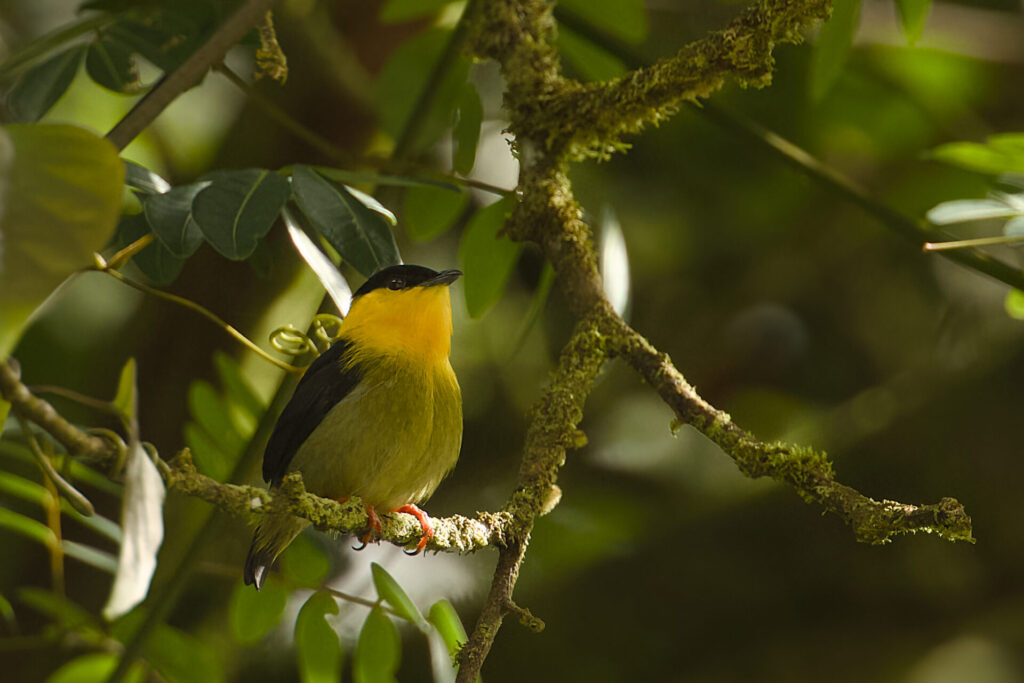
1. Lance-tailed Manakin
Scientific Name: Chiroxiphia lanceolata
The Lance-tailed Manakin is found in southwestern Costa Rica, Panama, northern Colombia, and northern Venezuela, inhabiting humid forests at elevations of 1000–1500m, particularly in the mid to upper layers.
With a body length of about 13.5cm, the males and females have different feather colors. Males have a black body with a vibrant blue back and a red crown, while females have an olive-green body. The central tail feathers are slightly longer and pointed, which is a distinctive feature.
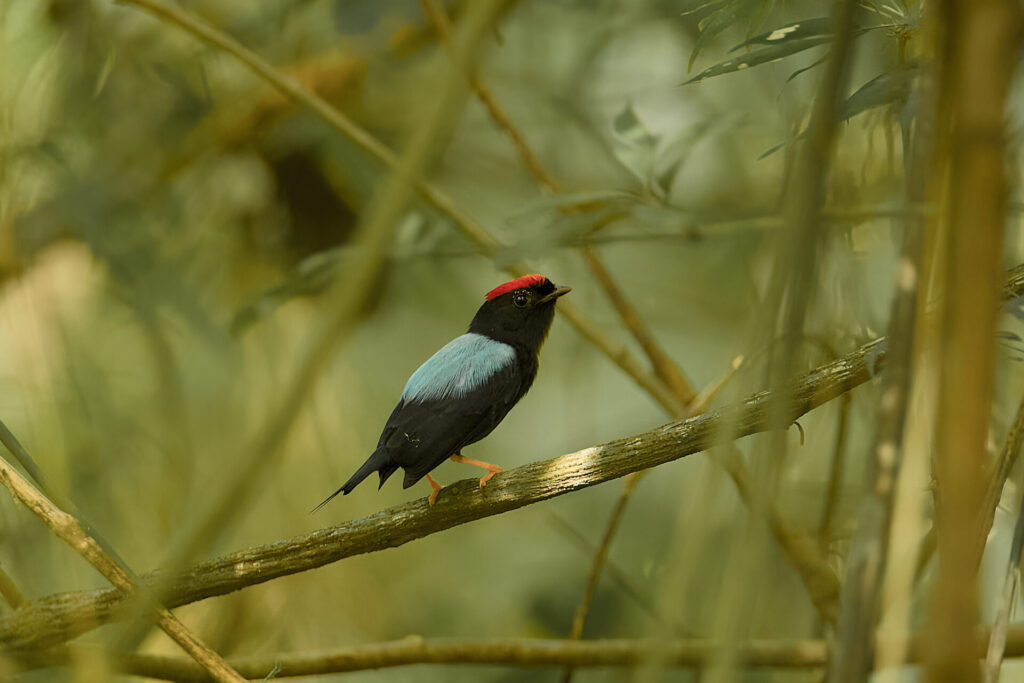
2. Golden-collared Manakin
Scientific Name: Manacus vitellinus
The Golden-collared Manakin lives in subtropical and tropical moist lowland forests, secondary forests, and disturbed areas in Colombia, Costa Rica, and Panama.
With a body length of about 10–11cm, males weigh around 19.3g and females about 17g. Males have a bright golden collar and throat, with an olive-colored back, waist, and lower belly, while the rest of the body is mostly black. Females have dull olive-green upperparts and a lighter, yellowish-green underside. They have a compact body with a short tail, large head, wide wings, and reddish-orange legs.
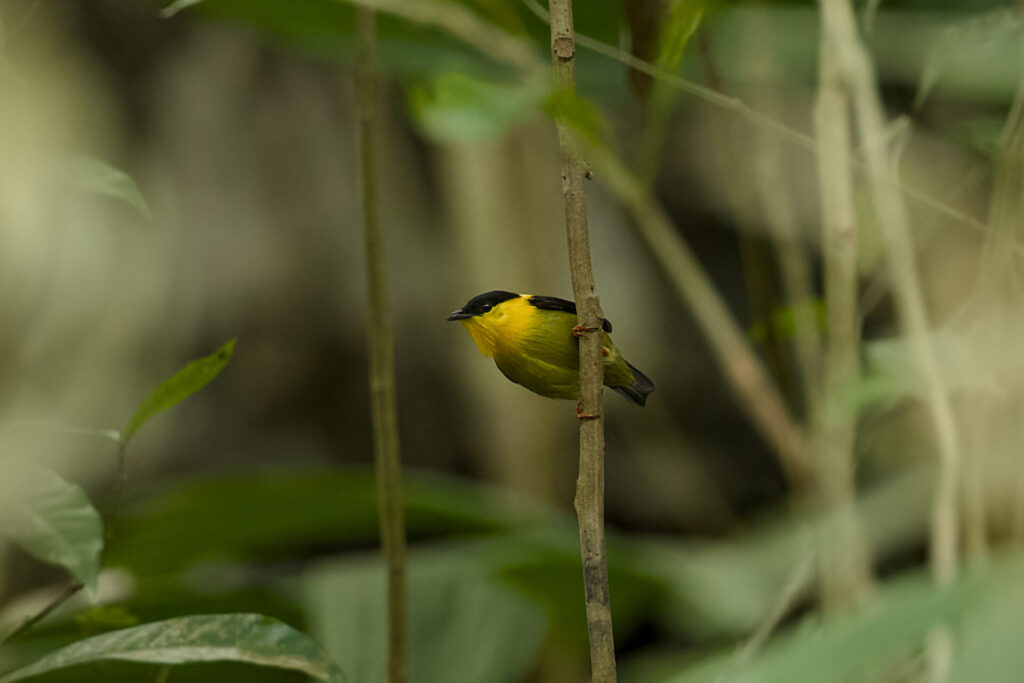
3. Blue-crowned Manakin
Scientific Name: Lepidothrix coronata
The Blue-crowned Manakin is a small bird found in the understory and mid-layers of lowland forests in South America, except for the eastern Andes.
It is small in size, with mostly black plumage and a blue crown, though males have varying feather colors depending on the region. These birds are usually solitary in tropical rainforest understory but may gather in fruiting trees. Males emit a frog-like call, and both males and females produce spaced “sweet” calls.
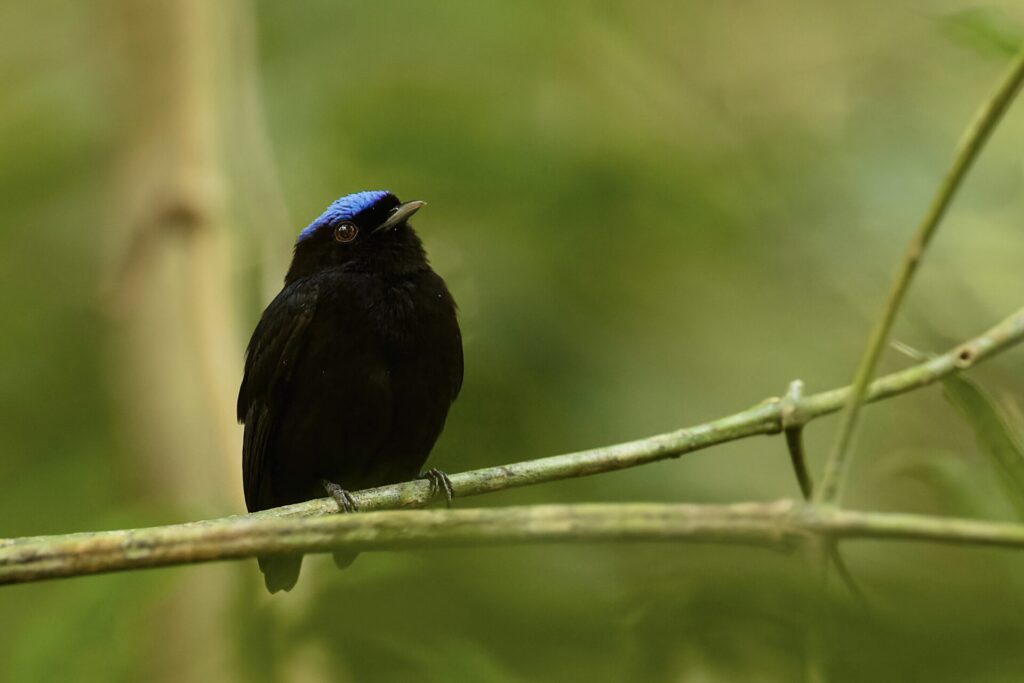
4. Golden-headed Manakin
Scientific Name: Ceratopipra erythrocephala
The Golden-headed Manakin inhabits moist and dry forests, secondary forests, and plantations in tropical regions of Central and South America.
With a body length of about 9.4cm, males are entirely black with a golden head, yellow beak, white and red thighs, and pink legs. Females and juveniles have olive-green plumage with pink legs. During the breeding season, males engage in cooperative lekking behavior, performing courtship dances by jumping or sliding from branch to branch. Recently, I observed a female incubating eggs.
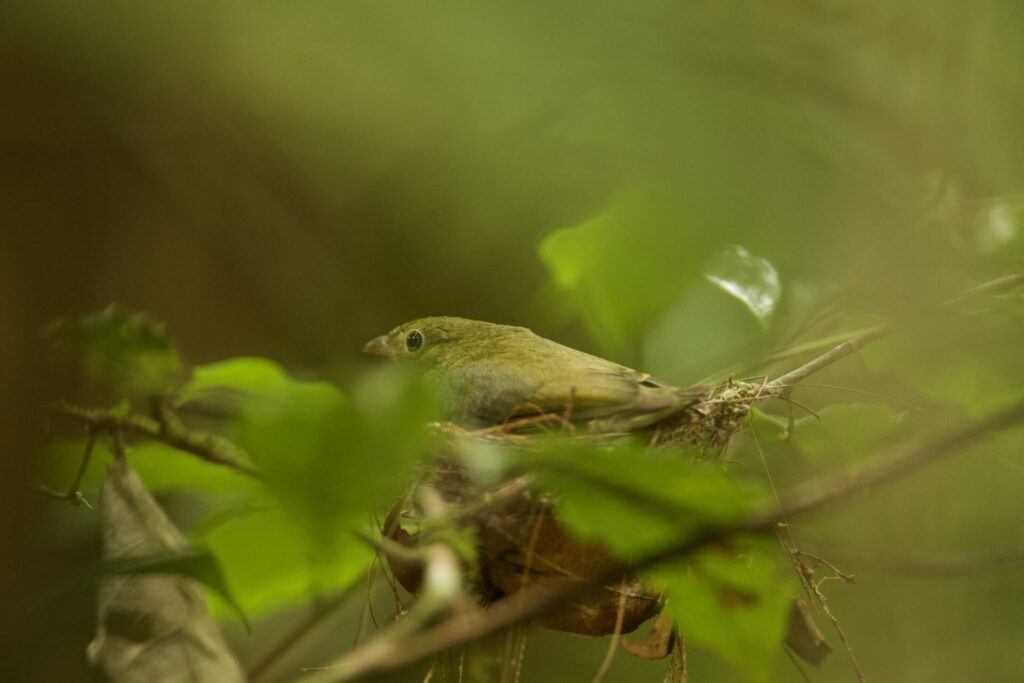
Summary
In Panama, you can observe a variety of manakin species nearly every day, making it one of the richest places in the world for manakins. To encounter their adorable forms, be sure to visit Panama!

